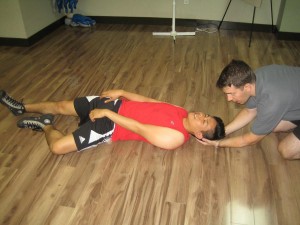Seizures occur in people who have epilepsy. There are conditions that can also cause seizures. Seizures occur when electrical signals misfires or disrupted in the brain. They are characterized by rapid uncontrolled shaking of the body or convulsion. There are two types of seizures – seizures that cause convulsions and seizures that cause loss of consciousness. There are several symptoms of seizures which includes the following:
[youtube url=”https://www.youtube.com/watch?v=DuMTx95Wps0″ width=”220″]- Febrile seizures – a seizure that is caused by high fever and occurs in children below 5 years old. The temperature of the child is usually 102 degrees Fahrenheit or even higher. The child shakes and tightens his or her muscles, the eyes of the child roll back into the head or the child becomes unconscious. The child may moan, vomit or will cry.
- Frontal lobe seizures – a seizure that last between 30 seconds and two minutes, depending on what part of the brain functions abnormally. If it is the frontal lobe (part of the brain that controls speech) that is affected, then the person cannot speak nor has difficulty speaking. The person can only scream, laugh or slur his/her speech.
- Grand mal seizures – large areas of the brain are affected that will cause convulsions or uncontrolled jerking and spasms. Grand mal seizures are caused by epilepsy and can also be caused by low blood sugar, stroke or even drug overdose. The seizure starts with the tonic phase which is loss of consciousness, then followed by clonic phase which is the convulsion, spasms of the muscle, tightening and clenching his/her muscles or even biting his/her tongue.
- Petit mal seizure – it is the opposite of grand mal seizure. The person will simply sit and stares as if nothing happened.

There are ways of preventing seizures from happening
- Get medications. They are used to prevent further seizures from occurring. The drug must have a time to take effect in the bloodstream of the individual and may take up about a week to be effective.
- Ketogenic diet – it is a high fiber diet and low in protein. It is a strict diet that one must not skip even for one meal. This diet prevents seizures from occurring among those who are prone to the condition.
- Surgery – last resort at preventing seizures.
Treatment of seizure
The following first aid measures must be carried out if an individual is experiencing a seizure.
- First thing you do is clear the area. Remove all objects out of the way to prevent the person having a seizure from hurting his or her self
- The head of the person should be protected by a pillow or a soft object is case the person might bang his/her head on the floor. This will help prevent head injury.
- The caregiver should be besides the individual suffering from seizures until he/she is completely recovered.
- Seek medical help if the person having a seizure is not breathing.
- Do not put any objects or food or drinks until he/she has completely recovered from the seizures.
More Information
The information posted on this page on managing and treating seizures is for learning purposes only. If you’d like to learn how to recognize, prevent and manage seizures enrol in a standard first aid course with one of our Canadian first aid providers.
